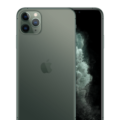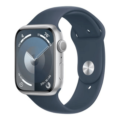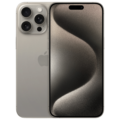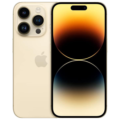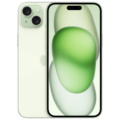- Home
- Apple Devices
- apple-watch
- Apple Watch Series 3 full specifications
Apple Watch Series 3 full specifications
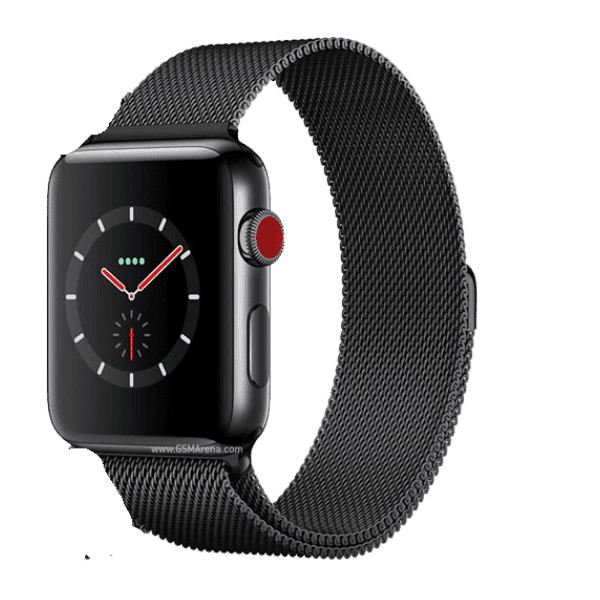
SPECIFICATIONS
General
| Status | Available |
| Announced |
2017, September |
| Released | 26 September, 2025 |
| Model |
A1860, A1861, A1889, A1891, A1890, A1892 |
| Price Apple iPhone Price in USA, UK, Canada, Australia, India, Pakistan, China, Japan and Europe |
EUR 700 USD 766 |
Network
| Technology |
GSM / HSPA / LTE |
| 2G Network | GSM 850 / 900 / 1800 / 1900 |
| 3G Network |
HSDPA 850 / 900 / 2100 / 800 - Europe, Australia (A1891) HSDPA 850 / 1700(AWS) / 1900 / 800 - USA, LATAM, Canada (A1861) HSDPA 2100 - China (A1892) |
| 4G Network |
1, 3, 5, 7, 8, 18, 19, 20, 26 - Europe, Australia (A1891) 2, 4, 5, 12, 13, 17, 18, 19, 25, 26, 41 - USA, LATAM, Canada (A1861) 1, 3, 39, 40, 41 - China (A1892) |
| Speed | HSPA, LTE |
| GPRS GPRS (General Packet Radio Service) is a packet oriented mobile data service on the 2G and 3G cellular communication system's global system for mobile communications (GSM), Generally, GPRS is used for the purpose of wireless data transfer, such as sharing pictures and videos or browsing the Internet via a mobile phone connection. | |
| EDGE EDGE (Enhanced Data GSM Environment) is a wireless network technology generally considered the next step in the 2G network offers data transfer rates up to four times faster than ordinary GSM networks, Generally, EDGE is used for the purpose of wireless data transfer, such as sharing pictures and videos or browsing the Internet via a mobile phone connection. |
Body
| Dimensions | 42.5 x 36.4 x 11.4 mm (1.67 x 1.43 x 0.45 in) |
| Weight | 52.8 g (1.87 oz) |
| Colors |
Space Black, Silver |
| SIM SIM (Subscriber Identity Module) is a small card that contains mobile network subscriber's account information. This allows the phone using the card to attach to a mobile network. The SIM card is most commonly associated with GSM and UMTS mobile networks. Moving a SIM card from one phone to another allows a subscriber to switch mobile phones without having to contact their mobile network carrier. SIM cards can also be used by a phone to store limited amounts of data, such as phone numbers and text messages. | eSIM |
| Build | Glass front (Sapphire crystal), ceramic/sapphire crystal back, stainless steel frame |
| Water Resistant | 50m water resistant |
Display
| Display Type Display Technology => A number of display technologies and types used in mobile phones => TFT (Thin Film Transistor), IPS (In-Place Switching), OLED (Organic Light Emitting Diode), AMOLED (Active-Matrix Organic Light-Emitting Diode), Super AMOLED (an even advanced version of AMOLED), Resistive Touchscreen (Resistive touchscreens contain two layer of conductive material with a very small gap between them which acts as a resistance), Capacitive Touchsceen (Capacitive touchscreen technology consists of a layer of glass coated with a transparent conductor) | Retina OLED, 1000 nits (peak) |
| Size | 1.65 inches |
| Resolution | 390 x 312 pixels |
| Pixel Density Pixel Density (PPI) is refers to the concentration of pixels on a particular display, measured in pixels per inch (ppi). Pixel density is calculated by dividing the diagonal pixel resolution of a display by its diagonal size, higher pixel density better display quality. | (~303 ppi density) |
| Touch Screen | 3D |
| Display Protection Display Protection => Gorilla Glass is a special alkali-aluminosilicate glass shield with exceptional damage resistance that helps protect mobile displays from scratches, drops, and bumps of everyday use, It is always better to go for a smartphone with Gorilla Glass for that added protection and peace of mind. | Sapphire crystal glass |
| Multitouch | |
| Features |
3D Touch display |
Camera
| Primary Camera is able to capture photographs and usually videos, The most important characteristics of a camera are the resolution (measured in megapixels), lens focus type (fixed or automatic), higher megapixel cameras are known to capture higher quality photos, but not always a good measurement of the photos quality. | No |
Software
| Operating System OS => Every computer system run on a base software called Operating System (OS). Operating System controls all basic operations of the computer (such as smartphone, PDAs, tablet computers and other handheld devices). The Operating System allows the user to install and run third party applications (apps), apps are used to add new functionality to the device. | watchOS 4.0, upgradable to watchOS 8.7 |
| Browser (Default) | Safari |
Hardware
| Chipset Chipset is a group of integrated circuits designed to perform one or a more dedicated functions, often with real time computing constraints, Popular smartphones are equipped with more advanced embedded chipsets that can do many different tasks depending on their programming. | Apple S3 |
| CPU CPU (Central Processing Unit) mostly known as processors, CPU processes instructions in order to carry out certain functions that make your device operate properly. Processors are often described as the brain of computers, smartphones and tablets, Smartphones and tablets rely on processors to carry out their every task, Processors are an incredibly important factor in selecting any type of computing device, including your smartphone. | Dual-core |
| GPU GPU (Graphics Processing Unit) is a single-chip processor designed to rapidly manipulate and alter memory to accelerate the creation of images in a frame buffer intended for output to a display, This includes things such as lighting effects, object transformations, and 3D motion. | PowerVR |
| RAM (Memory) RAM (Random Access Memory) is a type of computer memory that can be accessed randomly, any byte of memory can be accessed without touching the preceding bytes that allows information to be stored and accessed quickly from random locations. RAM is the most common type of memory found in computer systems, smartphones, tablets and other electronic devices. | 768 MB |
| Internal Storage Internal Storage is a data storage space (flash memory) mostly used in smartphones, tablets and other electronic devices where operating system, apps, music, photos, videos, files and other user data Is stored. | 16GB |
| Card Slot Memory Card Slot is a special slot for inserting a memory card. Memory cards allow you to expand the phone's built-in memory, A memory card (sometimes called a flash memory card or a storage card) is a small storage medium used to store data such as text, pictures, audio, and video, for use on small, portable or remote computing devices such as mobile phones, mp3 players, digital cameras. | No |
| Sensors Sensors are electronic components that detects and responds to some type of input from the physical environment. The specific input could be light, heat, motion, moisture, pressure and location, The output is generally a signal that is converted to use in computing systems, a location sensor, such as a GPS receiver is able to detect current location of your electronic device. |
Accelerometer, gyro, heart rate, barometer Natural language commands and dictation (talking mode) |
Battery
| Battery Type Battery Type => Cell phones run on various kinds of batteries depending on the manufacturer, phone size or shape and features. There are basically four types of cell phone batteries => Lithium Polymer, Lithium Ion, Nickel Metal Hydride and Nickel Cadmium. | Li-Po |
| Capacity Battery Capacity is a measure (typically in Amp-hr) of the charge stored by the battery, and is determined by the mass of active material contained in the battery. The battery capacity represents the maximum amount of energy that can be extracted from the battery under certain conditions. | 341 mAh (1.34 Wh) |
| Placement | Non-removable |
| Wireless Charging Wireless Charging (Inductive Charging) uses an electromagnetic field to transfer energy between two objects. This is usually done with a charging station. Energy is sent through an inductive coupling to an electrical device, which can then use that energy to charge batteries or run the device. | Yes |
Media
| Loudspeaker | Yes |
| 3.5mm Jack | |
| FM Radio | No |
Connectivity
| Bluetooth Bluetooth is a wireless communications technology for exchanging data between mobile phones, headsets, computers and other network devices over short distances without wires, Bluetooth technology was primarily designed to support simple wireless networking of personal consumer devices. | 4.2, A2DP, LE |
| Infrared Infrared connectivity is an old wireless technology used to connect two electronic devices. It uses a beam of infrared light to transmit information and so requires direct line of sight and operates only at close range. | |
| Wi-fi Wi-Fi is a popular wireless networking technology using radio waves to provide high-speed network connections that allows devices to communicate without cords or cables, Wi-Fi is increasingly becoming the preferred mode of internet connectivity all over the world. | 802.11 b/g/n |
| Wi-fi Hotspot | |
| USB | No |
| GPS GPS The Global Positioning System is a satellite-based radio navigation system, GPS permits users to determine their position, velocity and the time 24 hours a day, in all weather, anywhere in the world, In order to locate your position, your device or GPS receiver must have a clear view of the sky. | GPS, GLONASS |
| NFC NFC (Near field communication) is a set of standards for smartphones and similar devices to establish peer-to-peer radio communications with each other by touching them together or bringing them into proximity, usually no more than a few inches. |
MISC
Description
The Apple Watch Series 3, released in September 2017, remains a reliable and affordable smartwatch. It continues to impress users with its core features, solid performance, and dependability. Despite newer Apple Watch models being released, the Series 3 still stands out as a popular option.
Its fitness tracking, cellular connectivity, and seamless integration within the Apple ecosystem make it a favorite. Whether you’re new to smartwatches or an experienced Apple fan, the Series 3 delivers outstanding value for its price.
Table of Contents
Design and Build Quality

The Apple Watch Series 3 spec has a sleek and compact design with dimensions of 42.5 x 36.4 x 11.4 mm and a lightweight build, weighing just 52.8 grams. Its size makes it comfortable for long-term wear, whether for exercise or daily use. The watch features a sapphire crystal glass front that’s durable and resistant to scratches, coupled with a ceramic/sapphire crystal back and a stainless steel frame, which provide a premium feel.
Display
The Apple Watch Series 3 is equipped with a 1.65-inch Retina OLED display, offering vibrant colors and sharp visuals. With a resolution of 390 x 312 pixels and a pixel density of 303 ppi, the screen delivers clear, easy-to-read text and images.
The display can reach a peak brightness of 1000 nits, ensuring it’s visible even in bright sunlight, making it highly practical for outdoor use. The screen is protected by sapphire crystal glass, enhancing durability and scratch resistance.
Performance and Platform

At the heart of the Apple Watch Series 3 is the Apple S3 chipset, paired with a dual-core processor. This combination delivers a smooth and responsive user experience, ensuring apps run efficiently and reliably.
The device runs on, which can be upgraded to watchOS 8.7, providing access to the latest updates. Equipped with 768MB of RAM and 16GB of internal storage, the Series 3 offers ample space for apps and music. This configuration makes it ideal for daily use, providing smooth performance without noticeable lag.
Battery Life and Charging
The Apple Watch Series 3 spec is powered by a 341mAh Li-Ion battery, which provides up to 18 hours of usage on a single charge. This is more than enough for a full day of activities, including fitness tracking and notifications. The watch supports wireless charging, offering users a hassle-free way to charge their devices. While it may not feature the fast-charging capabilities of newer models, it still delivers reliable battery performance, making it perfect for daily wear.
Connectivity and Sensors
Connectivity is a major strength of the Apple Watch Series 3. It supports Wi-Fi 802.11 b/g/n, Bluetooth 4.2, and NFC, ensuring easy pairing with devices and wireless communication. Additionally, the GPS and GLONASS positioning systems are integrated, enabling accurate location tracking during outdoor activities. The inclusion of NFC also allows for Apple Pay, providing a convenient way to make secure payments directly from your wrist.
The watch is equipped with several sensors, including an accelerometer, gyro, heart rate sensor, and barometer. These sensors allow users to track movement, heart rate, and altitude, providing comprehensive fitness monitoring.
Whether you’re running, swimming, or hiking, the Apple Watch Series 3 offers reliable data to help you achieve your fitness goals. It also supports 50-meter water resistance, making it suitable for swimming and other water-based activities.
Cellular Connectivity
One of the best features of the Apple Watch Series 3 Spec is its optional cellular connectivity. The GPS + Cellular models allow users to make calls, send text messages, and use apps without needing to carry a phone.
This is a major benefit for those who prefer to leave their phone at home while out on a run or hike. Cellular functionality ensures that you stay connected, even when you’re away from your phone. The Series 3 models are available in different regions, with specific versions for the United States, Europe, and Asia.
Models and Availability
The Apple Watch Series 3 Spec comes in both GPS-only and GPS + Cellular models, with multiple variants available depending on the region. The watch is available in two color options: Space Black and Silver. The GPS + Cellular versions are compatible with eSIM technology, allowing users to activate cellular service without a physical SIM card. These options make the Series 3 a highly flexible device, allowing users to choose the version that best suits their needs.
Price and Value
In terms of pricing, the Apple Watch Series 3 offers an affordable option compared to newer models. Typically priced at around 700 EUR, it remains an attractive choice for users seeking core features. The Series 3 lacks advanced health features, like ECG or blood oxygen monitoring, found in newer models.
However, it still delivers excellent value for users prioritizing fitness tracking, cellular connectivity, and basic smartwatch functions. Whether you’re a first-time smartwatch user or an experienced Apple fan, the Apple Watch Series 3 offers great value at an affordable price.
Conclusion
The Apple Watch Series 3 remains a reliable and affordable option for users seeking essential smartwatch features. Its sleek design, high-quality display, strong performance, and fitness-tracking capabilities make it appealing.
Although it lacks advanced health features of newer models, it still offers excellent value for users focused on connectivity and activity tracking. If you’re after a budget-friendly, reliable device, the Apple Watch Series 3 is definitely worth considering.

